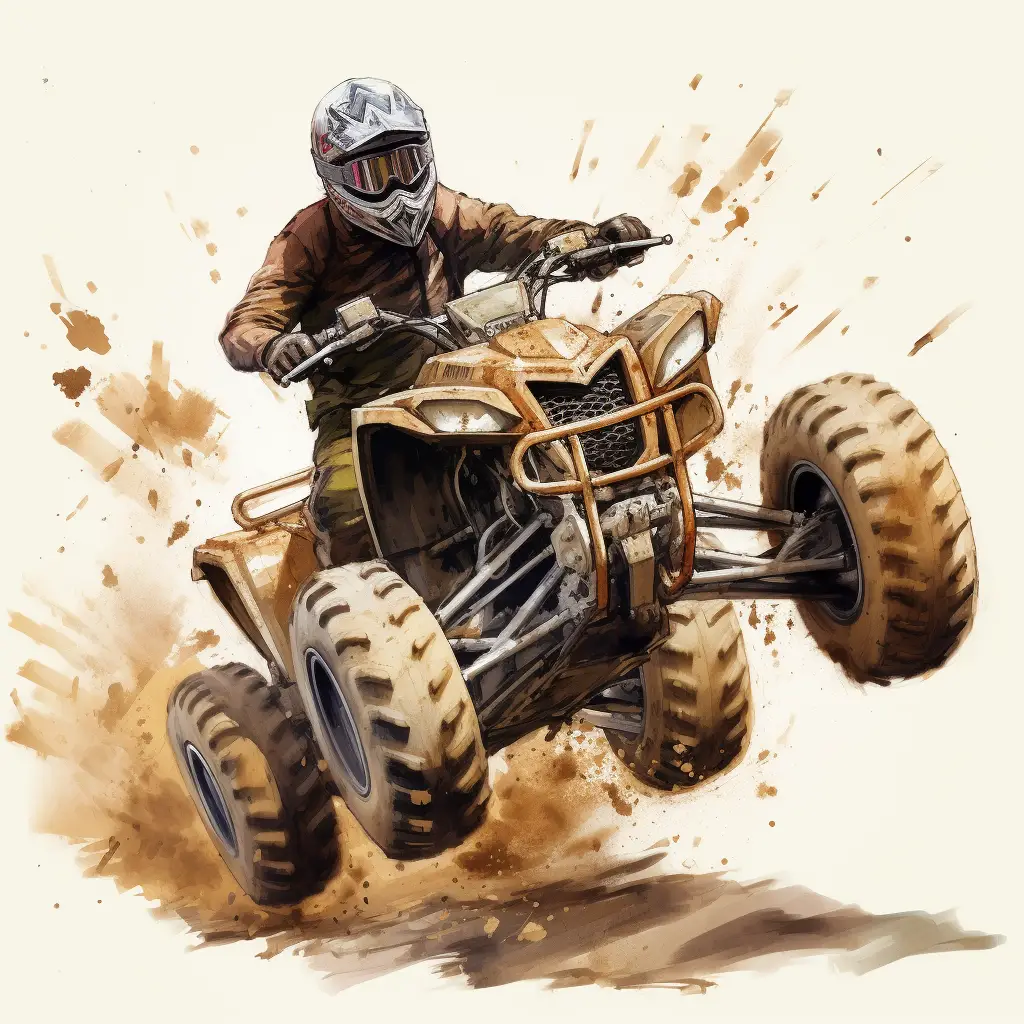
ATV wheelies are exhilarating stunts that showcase the rider’s skill and control. The ability to lift the front wheels of an all-terrain vehicle (ATV) off the ground and balance on just the rear wheels requires a solid understanding of the physics involved and precise execution. In this article, we will explore the fundamental principles behind ATV wheelies and provide valuable tips on how to master this thrilling technique.
The Basic Physics of Wheelies
To comprehend ATV wheelies, it’s essential to grasp the basic physics involved. When an ATV accelerates, the force exerted by the rear tires propels the vehicle forward. However, due to the laws of motion, there is an equal and opposite force acting on the rear tires in the opposite direction. This force is known as the reaction force.
Center of Mass and Balance
The center of mass (CoM) is a crucial factor in performing wheelies. The CoM is the point at which an object’s mass is evenly distributed. When executing a wheelie, the rider shifts their body weight to lift the front wheels off the ground. By manipulating the CoM, the rider alters the balance of the ATV, allowing it to tilt back onto the rear wheels.
Power and Weight Distribution
The power and weight distribution play significant roles in achieving a successful wheelie. ATVs with more power are more likely to lift their front wheels, as the greater force generated by the engine enables a more forceful acceleration. Additionally, weight distribution affects the balance of the ATV, with a rear-biased distribution facilitating wheelies.
Technique and Body Positioning
Mastering the technique and adopting the correct body positioning are vital for executing wheelies effectively. The rider must apply controlled throttle input to achieve the desired lift while maintaining balance. Proper body positioning, such as leaning back and gripping the handlebars firmly, helps stabilize the ATV and control the wheelie.
Traction and Tire Pressure
Traction and tire pressure significantly impact the performance of ATV wheelies. Adequate traction allows the rear tires to grip the terrain, enabling a controlled lift without losing control. Adjusting the tire pressure to an optimal level, based on the terrain conditions, can enhance traction and improve the wheelie experience.
Practice and Progression
Mastering ATV wheelies requires consistent practice and progression. It is advisable to start with smaller wheelies and gradually increase the height and duration as confidence and skills develop. Practicing in a controlled environment with sufficient space and safety measures is essential to minimize the risk of accidents.
Safety Considerations
While ATV wheelies are thrilling, safety should always be a top priority. Here are some important safety considerations:
- Always wear appropriate safety gear, including a helmet, goggles, gloves, and protective clothing.
- Perform wheelies in designated areas away from pedestrians and other vehicles.
- Avoid performing wheelies on public roads or surfaces that may be hazardous.
- Regularly inspect and maintain your ATV to ensure it is in proper working condition.
- Never attempt wheelies beyond your skill level or in unsafe conditions.
ATV wheelies are a captivating display of skill and physics in action. Understanding the principles behind wheelies, such as center of mass, power and weight distribution, technique, and traction, is crucial to mastering this technique. By practicing safely, gradually progressing, and employing proper body positioning, riders can elevate their ATV wheelie abilities and experience the thrill firsthand.
FAQs
Q1: Are ATV wheelies dangerous? ATV wheelies can be dangerous if performed without proper skill, caution, and safety gear. It is important to practice in controlled environments and gradually progress to minimize the risk of accidents.
Q2: Can any ATV perform wheelies? Most ATVs have the potential to perform wheelies, but the ease and extent of performing wheelies may vary depending on factors such as power, weight distribution, and rider skill.
Q3: Can tire modifications enhance ATV wheelie performance? Modifications such as tire pressure adjustments and using tires with more traction can positively impact ATV wheelie performance. However, it is essential to consider the terrain and make modifications accordingly.
Q4: How long does it take to learn ATV wheelies? The time required to learn ATV wheelies varies for each individual. It depends on factors such as prior riding experience, dedication to practice, and natural aptitude. Consistent practice and a focus on proper technique are key to accelerating the learning process.
Q5: Are there any professional ATV wheelie competitions? Yes, there are professional ATV events and competitions that showcase skilled riders performing various stunts, including wheelies. These events provide a platform for enthusiasts to demonstrate their abilities and compete against others.
In conclusion, mastering ATV wheelies involves understanding the physics behind them, practicing proper technique, and prioritizing safety. With dedication, patience, and a focus on skill development, riders can elevate their ATV wheelie prowess and experience the excitement and thrill of this captivating maneuver. So, gear up, practice responsibly, and embark on a thrilling journey of mastering the physics behind ATV wheelies!

